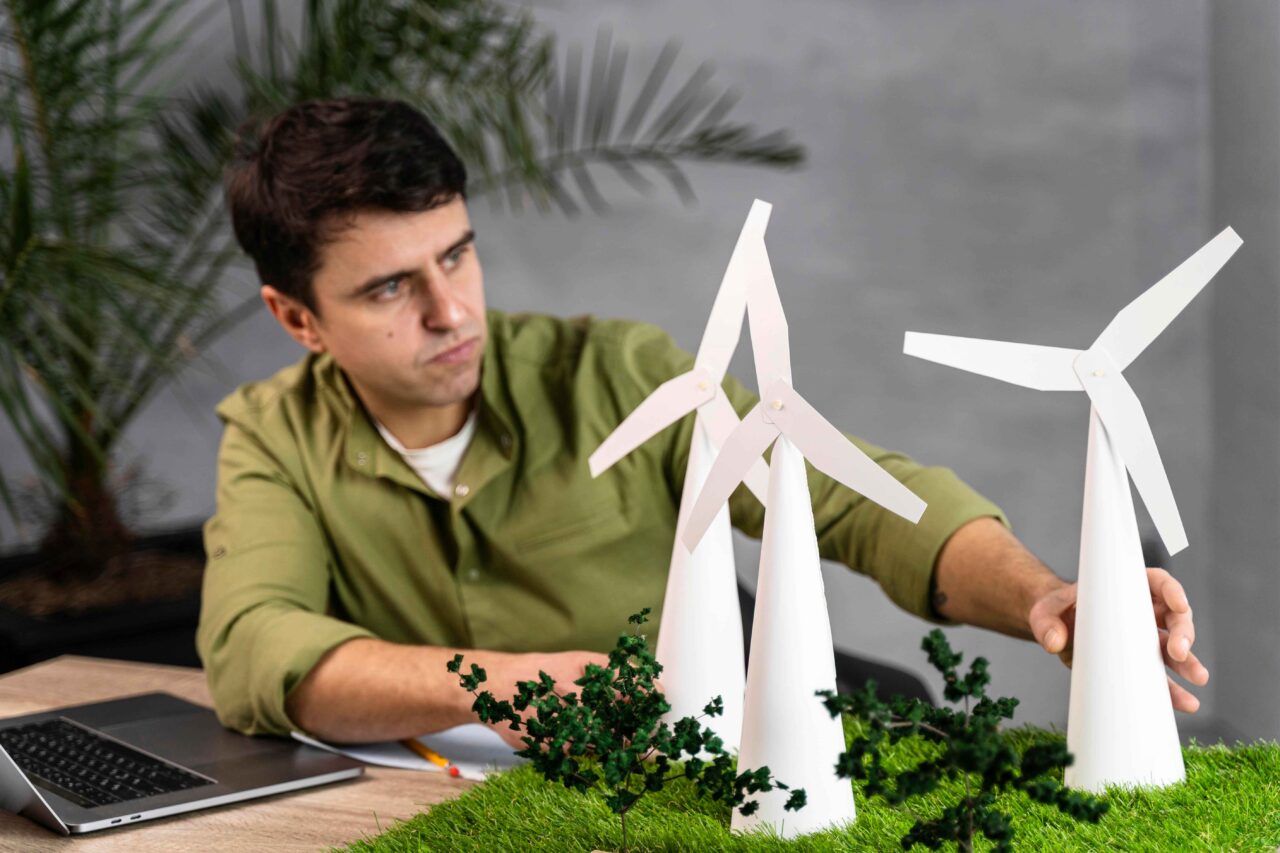The world is changing. Weather patterns are shifting, temperatures are rising, and natural disasters are becoming more frequent. Climate change is no longer a future problem; it’s a present reality. While humans have contributed significantly to the damage, technology is now stepping in to offer hope. One of the most promising tools available today is AI in addressing climate change.
From tracking global temperatures to predicting extreme weather events, AI in climate change is
helping researchers, governments, and environmental organizations make smarter, faster decisions. But how exactly does artificial intelligence play a role in saving the planet? Let’s explore.
What is AI in Climate Change?
In simple terms, AI in climate change refers to utilizing artificial intelligence, such as machine learning and data analysis, to study, understand, and respond to environmental challenges. AI helps process huge amounts of climate data in seconds, something that would take humans days or even weeks to analyze. It can identify patterns, make predictions, and suggest actions that reduce harm and improve sustainability.

AI-Powered Climate Models: Predicting the Future with Precision
One of the biggest challenges in addressing climate change is uncertainty. How quickly will sea levels rise? Which areas will experience water shortages? When can we expect the next heatwave? This is where AI-powered climate models come into play. These models utilize machine learning algorithms to simulate various climate scenarios. Unlike traditional models that need manual input and can be slow to update, AI-based models can quickly adapt to new data. For instance, if satellite data reveals unexpected temperature fluctuations in the Arctic, AI models can immediately incorporate that information and refine predictions for ice melting rates. This enables scientists to make more accurate forecasts and helps governments better prepare for natural disasters or food shortages.
Artificial Intelligence in Climate Solutions: Smarter Strategies, Faster Action
Artificial intelligence in climate solutions is not just about forecasting; it’s about acting. AI is used to design smarter energy systems, optimize the use of renewable sources like solar and wind, and even manage electric grids more efficiently. For example, AI can monitor energy consumption in real-time and suggest the best times to run power-intensive appliances, which helps lessen energy waste. In cities, AI helps optimize traffic flow, reducing vehicle emissions. On a larger scale, companies leverage AI to manage wind farms and solar panels more effectively by predicting weather changes and adjusting operations accordingly. Although these innovations may seem small individually, when implemented across millions of households and industries, they lead to a significant positive impact on the environment.
AI for Carbon Footprint Reduction: Every Bit Counts
Reducing carbon emissions is one of the most crucial goals in fighting climate change. Since industries, transportation, and agriculture are major contributors, AI provides a unique way to monitor and control their environmental impact. AI for lowering carbon footprints involves using smart sensors and data analysis to track emissions in real time. For instance, factories can use AI to detect when machines emit more than usual and adjust them automatically. AI tools can also evaluate supply chains and recommend ways to reduce emissions, such as choosing local suppliers or switching to eco-friendly materials. Even consumers can benefit. AI-powered apps help people monitor their daily carbon footprints and offer personalized tips for reduction. Whether it’s taking public transportation instead of driving or lowering electricity use during peak hours, AI supports individuals in making greener choices.
Wildfire Detection and Disaster Response
As wildfires become more frequent because of rising temperatures, AI is increasingly used to detect and respond to them faster. AI algorithms analyze satellite images and weather data to predict where wildfires might start. Once a fire begins, AI tools assist emergency services in mapping the area, planning evacuation routes, and allocating resources more efficiently. In the past, even a few hours delay resulted in the loss of homes and lives. Now, with AI supporting every step in climate change response, response times are quicker, helping to reduce damage.
Agriculture and Water Conservation
AI also supports climate-friendly agriculture. Smart farming tools use AI to determine the best time to plant crops, how much water to use, and which fertilizers will be most effective. This not only boosts crop yields but also conserves water and reduces the use of harmful chemicals. In drought-prone areas, AI-powered irrigation systems help save water by watering crops only when needed. This is just one of many ways AI is changing how we grow food without harming the environment.
Global Collaborations for a Greener Tomorrow
Many international organizations and governments are now investing in AI-driven climate solutions. For example, the United Nations has partnered with tech companies to develop AI tools that monitor global emissions and track progress toward climate goals. Startups worldwide are also creating innovative solutions, from AI-powered ocean cleanup robots to drones that plant trees in deforested areas. The global community is gradually realizing that AI in climate change is not just a concept; it’s a necessity.
The Road Ahead
While AI won’t solve climate change on its own, it remains a valuable partner in the effort. By combining human creativity with machine intelligence, we can discover smarter, quicker, and more effective ways to safeguard our planet.
The key is to keep investing in research, promote responsible AI use, and make sure these technologies are accessible to everyone-especially developing nations that are most vulnerable to climate impacts.
AI in climate change is transforming how we understand and respond to one of the biggest challenges of our time. Through AI-powered climate models, artificial intelligence in climate solutions, and AI for carbon footprint reduction, we’re creating smarter systems that protect both people and the planet.
As climate concerns grow, so does the need for innovation. And with AI leading the charge, there’s real hope for a greener, cleaner, and more sustainable future.
Get More Related Blogs –


